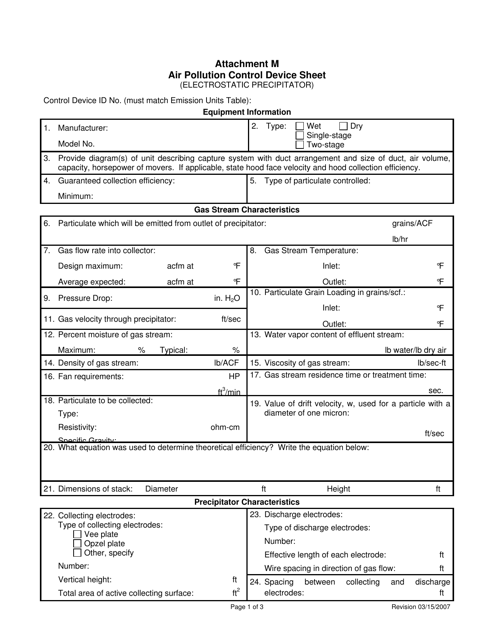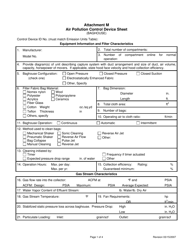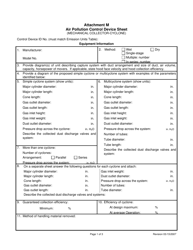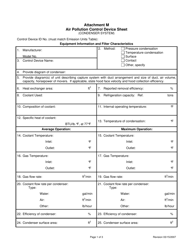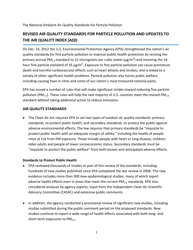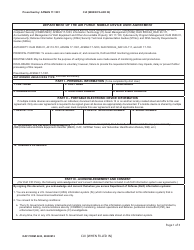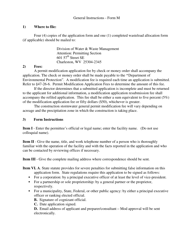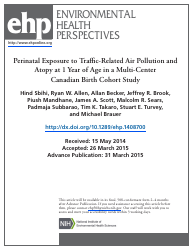Attachment M Air Pollution Control Device Sheet (Electrostatic Precipitator) - West Virginia
What Is Attachment M?
This is a legal form that was released by the West Virginia Department of Environmental Protection - a government authority operating within West Virginia. As of today, no separate filing guidelines for the form are provided by the issuing department.
FAQ
Q: What is an Electrostatic Precipitator?
A: An Electrostatic Precipitator (ESP) is an air pollutioncontrol device used to remove particulate matter (dust and pollutants) from industrial exhaust gases.
Q: How does an Electrostatic Precipitator work?
A: An ESP works by applying a high voltage electric field to ionize and charge particles in the exhaust gas stream, then collecting them on charged plates or electrodes.
Q: Why are Electrostatic Precipitators used?
A: Electrostatic Precipitators are used to minimize air pollution and improve air quality by removing harmful particulate matter from industrial emissions.
Q: What are the benefits of using Electrostatic Precipitators?
A: The benefits of using ESPs include reduction of air pollution, improved air quality, compliance with environmental regulations, and protection of human health.
Q: Are Electrostatic Precipitators effective in reducing air pollution?
A: Yes, Electrostatic Precipitators are highly effective in removing particulate matter from industrial emissions and reducing air pollution.
Q: Is maintenance required for Electrostatic Precipitators?
A: Yes, regular maintenance is required for Electrostatic Precipitators to ensure proper functioning and optimal performance.
Q: Do Electrostatic Precipitators consume a lot of energy?
A: Electrostatic Precipitators do consume some energy, but the overall energy consumption depends on the size and efficiency of the system.
Form Details:
- Released on March 15, 2007;
- The latest edition provided by the West Virginia Department of Environmental Protection;
- Easy to use and ready to print;
- Quick to customize;
- Compatible with most PDF-viewing applications;
- Fill out the form in our online filing application.
Download a printable version of Attachment M by clicking the link below or browse more documents and templates provided by the West Virginia Department of Environmental Protection.
